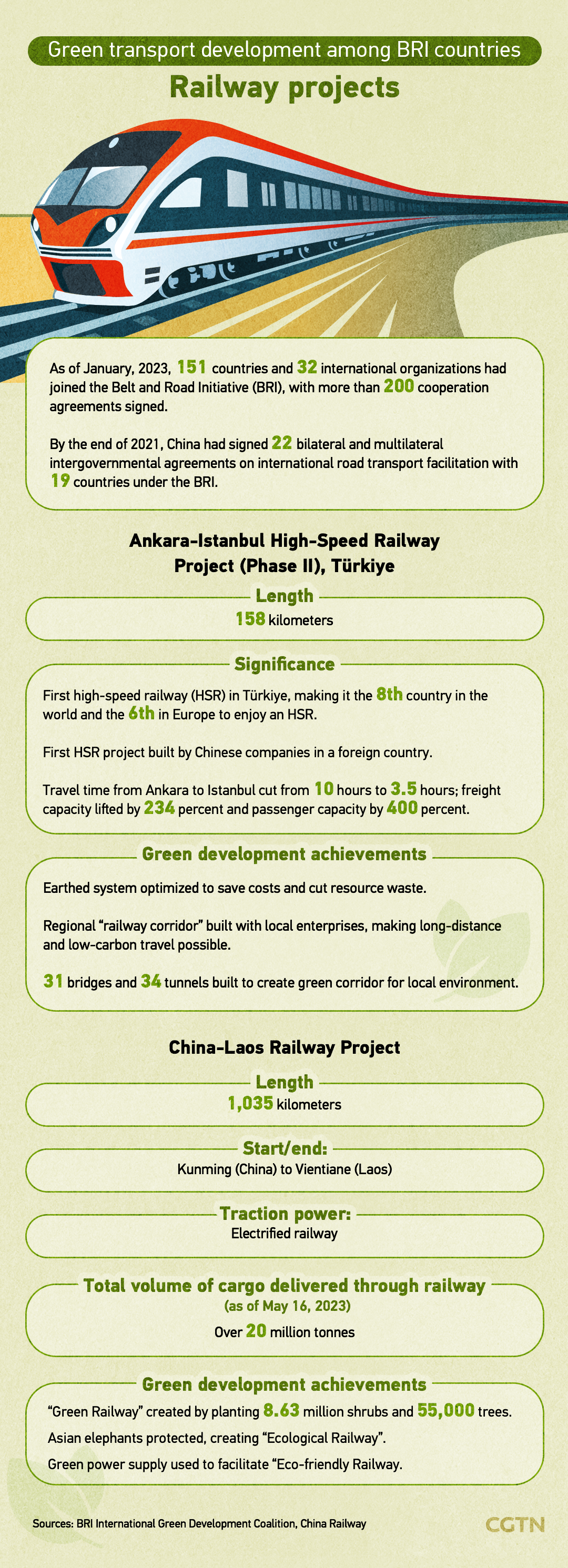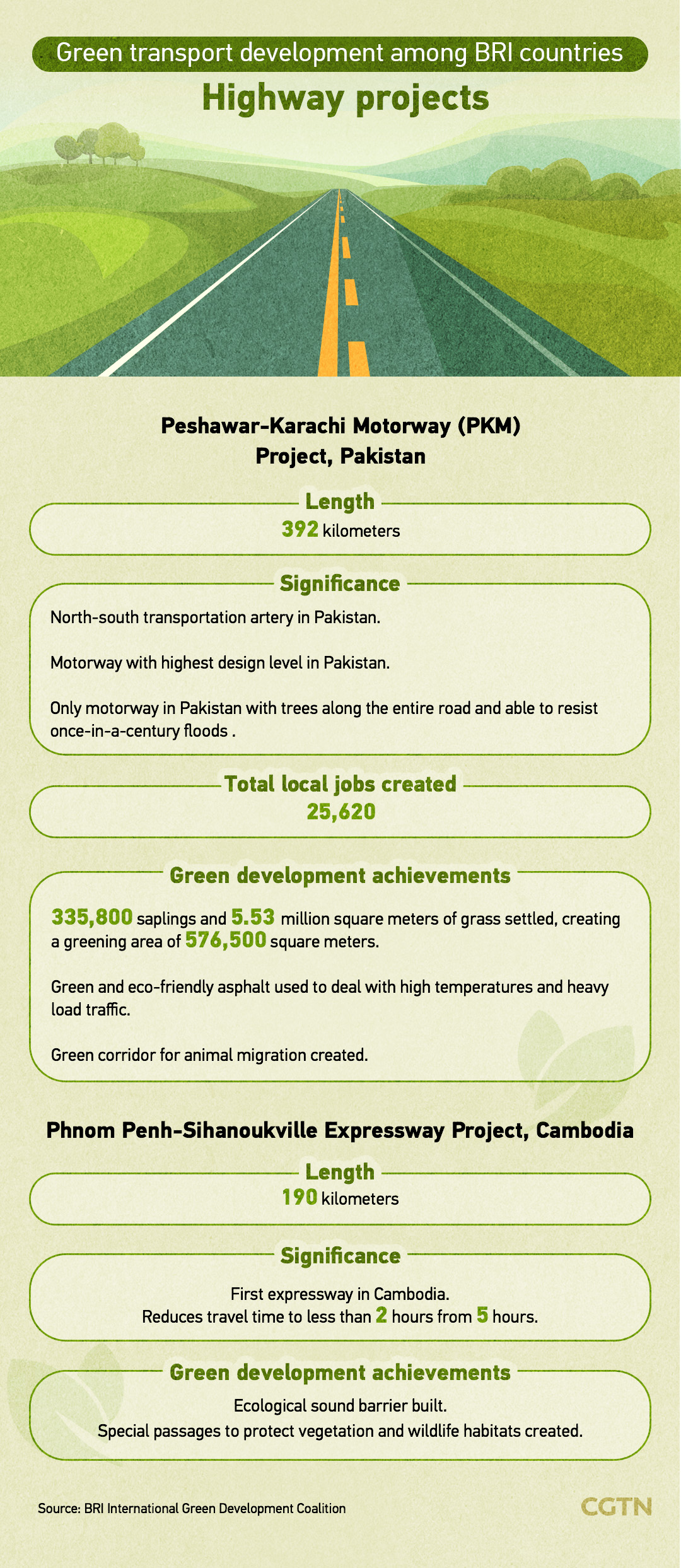The China-proposed Belt and Road Initiative (BRI) has led green development from the China-Laos Railway and Peljesac Bridge in Croatia to Peshawar-Karachi Motorway in Pakistan. These green projects have brought tangible benefits to the local people.
Proposed in 2013, the Belt and Road Initiative aims to build policy, infrastructure, trade, financial and people-to-people connectivity between continents, and adheres to the concept of green development.
As of June 2023, China has signed over 200 cooperation documents on the joint construction of the BRI with 152 countries and regions, most of which involve the construction of transportation infrastructure.
Main measures for realizing the green development of BRI transportation infrastructure projects include reducing resource waste, adopting environmental protection and energy-saving technologies, reducing pollution and carbon emissions, conserving biodiversity, using green energy and more.

The 1,035-km-long China-Laos Railway is a game changer for landlocked Laos that is composed of mostly mountainous and plateau areas with rich animal and plant resources.
It is an ecological railway that skirts environmentally sensitive areas and about 8.63 million shrubs and 55,000 trees were planted along the line.
The Peljesac Bridge is the largest infrastructure project in Croatia. The 2.4-km-long bridge over the Mali Ston Bay gave Croatia long-awaited territorial continuity and increased traffic convenience.
The project transported mud generated during piling to a special discharge point. In order to limit the damage caused by huge noise to marine organisms, the construction team adopted bubble curtain noise reduction measures.

The 392-km-long Sukkur-Multan Motorway is the largest transportation infrastructure project under the China-Pakistan Economic Corridor, and is part of Pakistan's Peshawar-Karachi Motorway (PKM).
The PKM project is seated in an area with small precipitation and low humidity where green plants find it hard to survive. Along the artery, a total of 335,800 saplings and 5.53 million square meters of lawns were settled, making a greening area of 576,500 square meters.
More green, low carbon and eco-friendly transportation infrastructure construction projects are shown on the graphics.